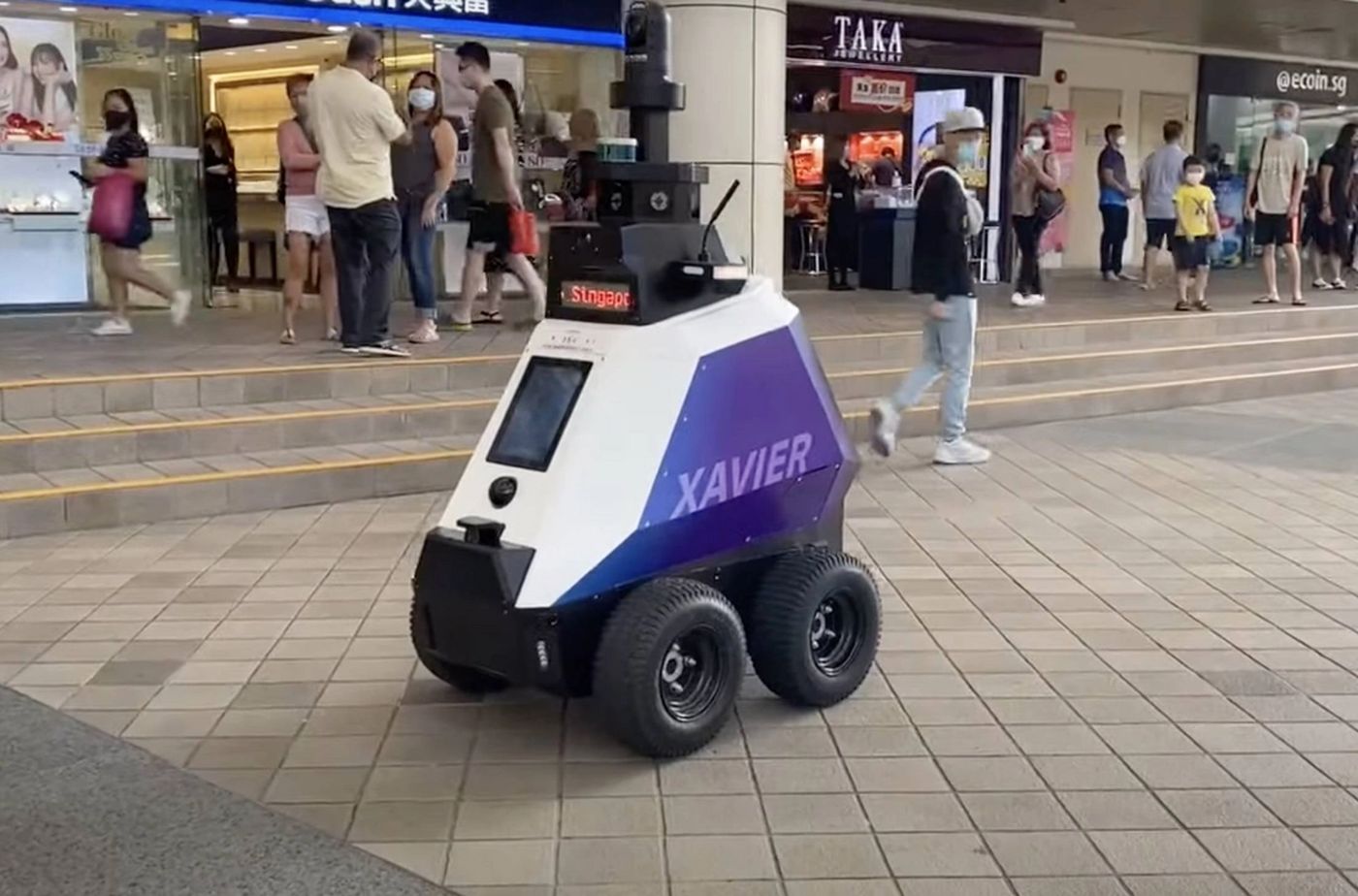A prototype named Xavier is currently deployed in the residential neighbourhood of Toa Payoh in north-central Singapore, where it travels on a predefined route across the area with its large foot traffic.
The robot scans its surroundings also for offenses like Illegal hawking, improperly parked bicycles, assembly of more than five people in line with prevailing Covid-19 safety management measures and e-scooters and motorcycles driving on footpaths.
In case a suspicion arises, the robot takes video footage and sends it to a command and control center which feeds the material into a video analytics system programmed to recognise a person’s posture and other visual indicators of “wrongdoing.”

“Educating the public” with pre-recorded messages
Then, the robot blares out a pre-recorded message, for example, “Please do not smoke in prohibited areas such as covered walkways.” The message is meant to “educate the public and deter such behaviours,” according to a release by the project team.
The robotic watchdog is a joint project involving five public Singapore agencies, namely the Home Team Science and Technology Agency, or HTX, the National Environment Agency, the Land Transport Authority, the Singapore Food Agency and the Housing and Development Board. It will go on for a three-week trial phase for now.
During the trial, the robot will be used for education and deterrence, rather than enforcement, the authorities said. The aim is to collect data to improve the analytics system and fine-tune any kinks.
The idea behind is to improve operational efficiency and reduce manpower needs for foot patrols, the project leaders said, especially for manpower-intensive operations such as surveillance of illegal hawkers and the like.
According to Investvine














